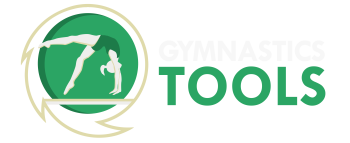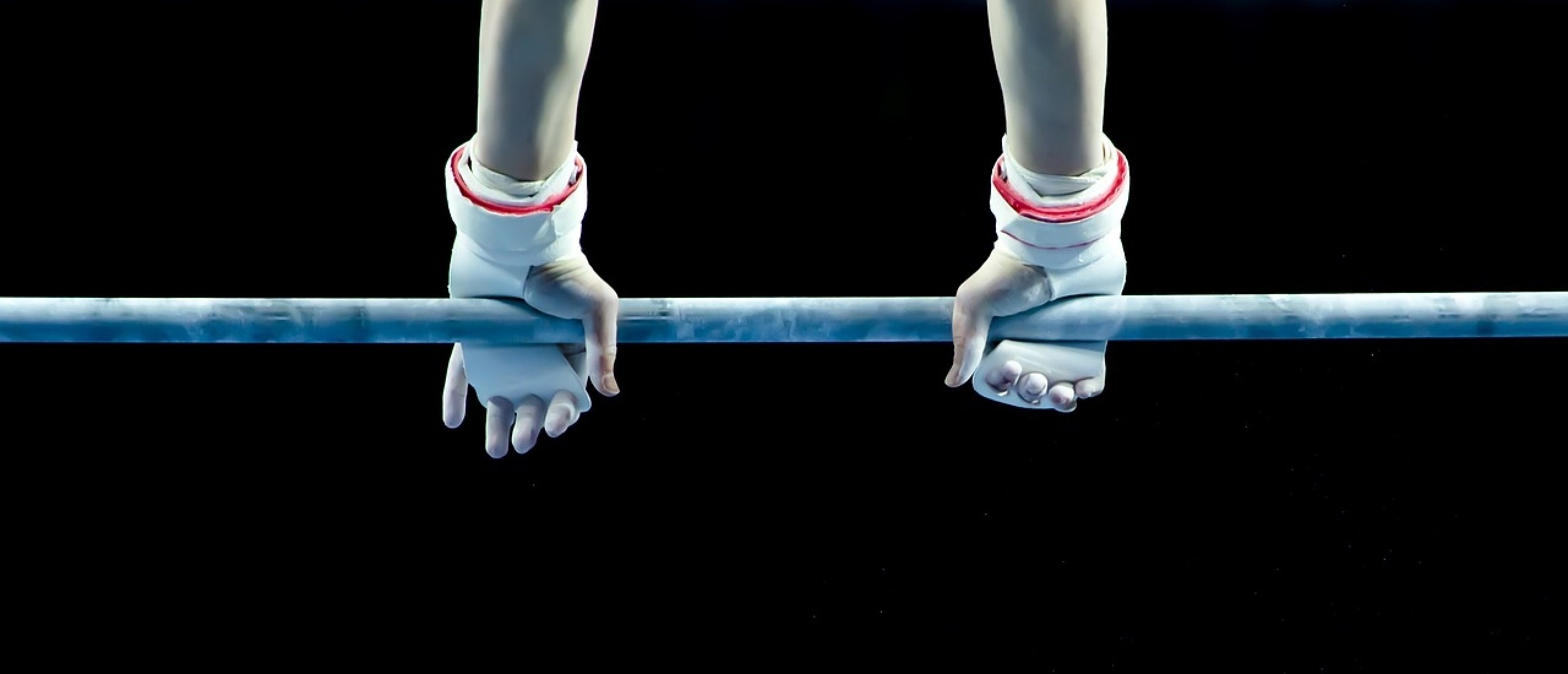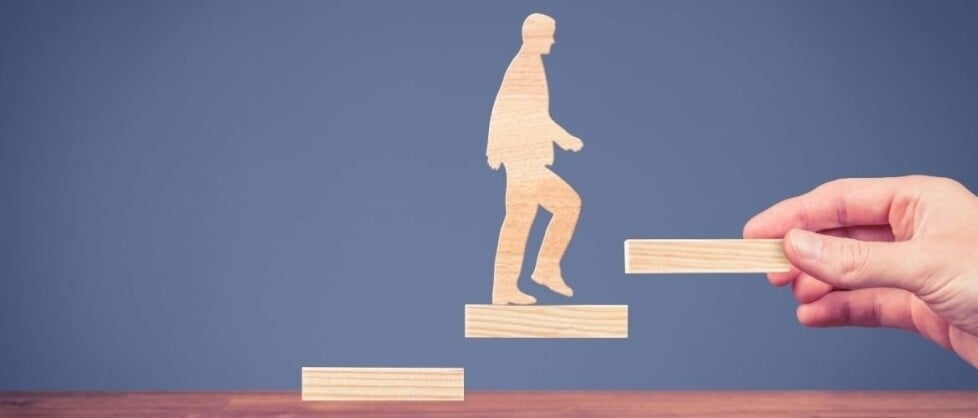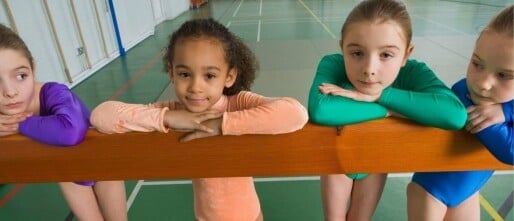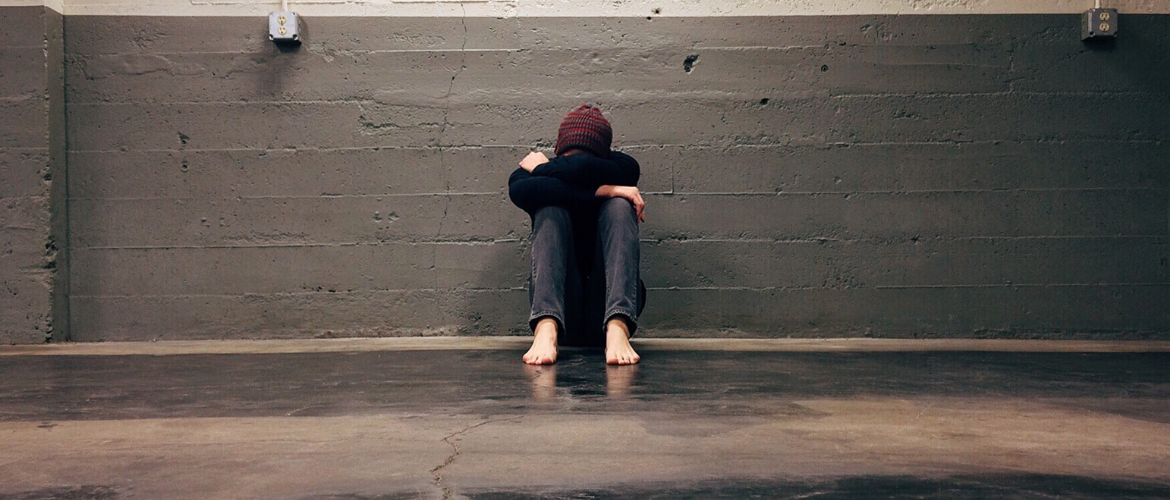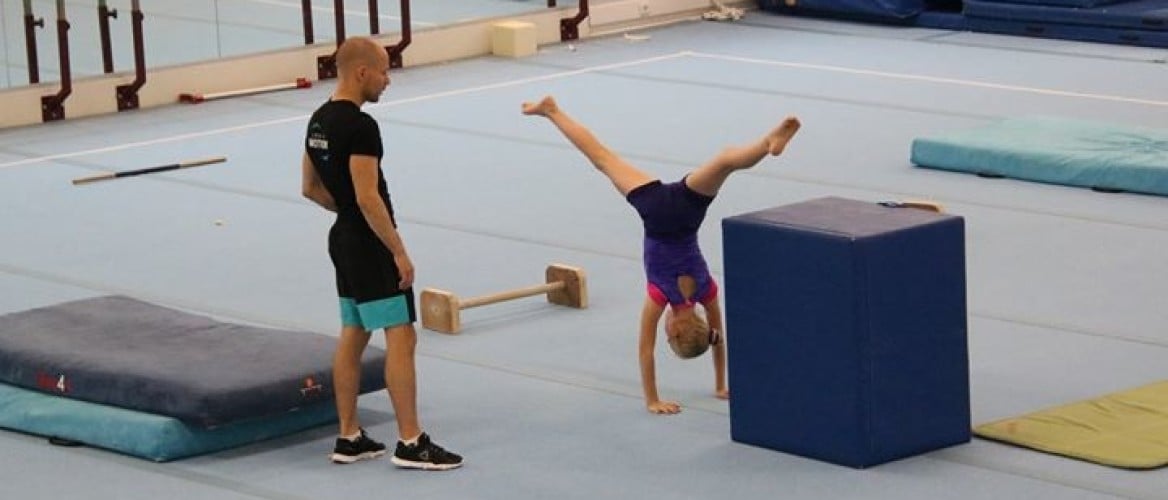For the past eight years, I've been working with gymnasts of all ages and ability levels: artistic gymnasts, trampoline gymnasts, rhythmic gymnasts - even cheerleaders and dancers. Aside from coaching the physical and technical side of gymnastics, my true passion is teaching the mental skills necessary to consistently produce your best gymnastics.
Just last year, I created a model that helps me to teach and explain the mental skills that are needed to achieve peak gymnastics performance. I call this model the 10.0 Mindset System. (I also have a mental skills podcast called the 10.0 Mindset that you can listen to on Spotify or Apple Podcasts.) The 10.0 Mindset System breaks up peak performance into three elements: attention, procedure, and self-concept. Through balancing these elements and focusing on the correct one, we can bring forth our best gymnastics when it matters most.
The Elements
The three elements - attention, procedure, and self-concept - are all important. But they're most important in difference scenarios.
- Attention: The focus of your conscious mind. Your current thoughts, and your general, habitual thought tendencies. Attention is the focal point of training sessions, because we want to focus our conscious thought on making small improvements to our gymnastics, which aggregate and compound over time.
- Procedure: The subconscious ability of your body to perform gymnastics skills without conscious thought. Take a cartwheel, for instance: you likely don't need to put much thought into doing a cartwheel. In fact, putting too much thought into it might actually make it more challenging. Procedure is the focal point of competition, where are biggest enemies are over-thinking and worry. Competition is a time to trust our body to do what it knows how to do.
- Self-Concept: Our own view and perspective of ourself. Your self-concept is the sum of your habits, attitudes, and decisions. Self-concept is crucial in all of your gymnastics experiences, because it essentially works as a limiting factor. Your performance will never rise above your self-concept. We improve our self-concept through visualizing positive outcomes, and taking small actions just outside of our comfort zone.
Think of these three elements as a triangle, with each corner representing a single element. We want our triangle to be balanced, and to have the correct corner in focus at all times.
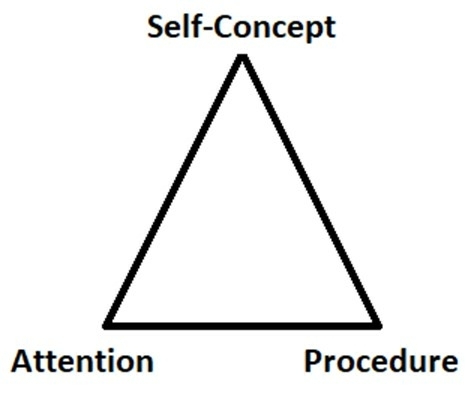
Improving Your Elements
So now that you're familiar with the three key elements, and you know when each is most important, how do you go about improving them? There is no magic cure to having great attention, or procedure, or self-concept: it's equal parts reflection and practice. You have to take responsibility for your own mental training. Work on it at home, work on it on your way to school, work on it before practice, work on it after practice. In a quick, informal survey of gymnasts, most gymnasts told me that they felt gymnastics was about 90% mental. When asked a follow up question, they went on to confess that they work on mental skills for less than 10% of their available time.
Improving Attention
Improving attention means working on monitoring and guarding our conscious thought processes. We'll quickly cover five skills that you can work on to make improvements to your attention:
- Attitude Selection: Your attitude is a choice that you make each and every day, from moment to moment. You have the option of either choosing an attitude of negativity, of despair, of defeat, or of choosing an attitude of growth, of opportunity, and of optimism. Do your best not to let a challenging day spill over into your practices.
- Distraction Control: There are many potential distractions, some external and some internal. Find strategies to keep you focused on the task at hand, and not allowing anything to pull you off course from pursuing your goal.
- Technical Visualization: See yourself performing your skills perfectly. If you can't even see yourself doing them, there's no way you'll feel confident when actually attempting them. Visualize yourself from the outside, as if you were a spectator watching from the sidelines. See what your best gymnastics looks like in your head. Each visualization makes that peak outcome more and more likely to occur.
- Pressure Simulation: It's easy to direct your attention when there's not very much pressure. When it really counts, there are other variables at play. Different lighting, slightly different equipment settings, etc. Make sure that you're comfortable adapting to small changes. Turn your requirements into preferences. Put some extra pressure on yourself so that when the pressure is on, you don't go into chaos mode.
- Thought Replacement: Monitor your thoughts, keeping aware of negative or unhelpful thoughts. When you catch yourself thinking an unhelpful thought, stop for a moment to recognize why it's irrational or unhelpful, and then consciously replace it with a more realistic or helpful one. One by one, change your mindset from automatically negative to automatically positive.
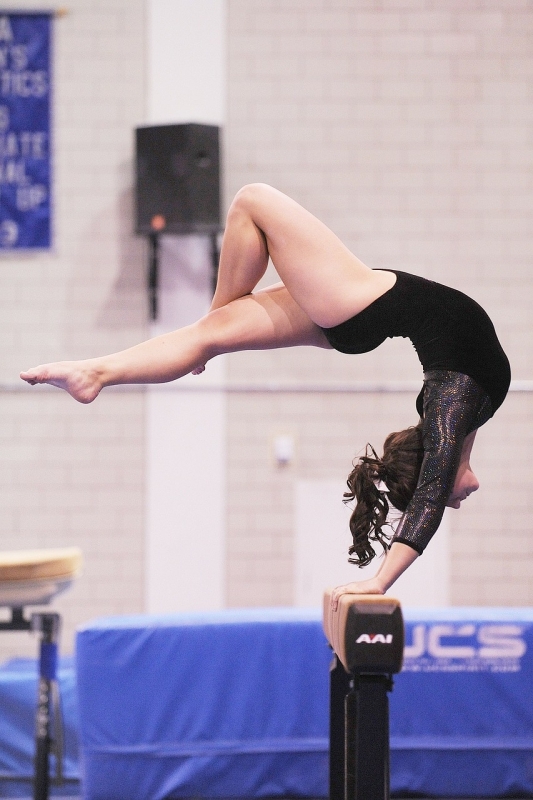
Improving Procedure
During competition, the focus is on our subconscious "procedural knowledge." These next five practical skills specifically cover working with your subconscious skill.
- Trusting Mindset: Training is the time for making little (and big) adjustments to our gymnastics. During competition, though, we want to be able to turn off those thoughts, and to trust our body. We want to be ready to "let it rip." You're not going to be making changes to your gymnastics at the competition. What you've brought is what you've got.
- Breath Control: When stress or emotion run high, it's important that we're able to use our breath to bring us back to a place of more peace. Practice controlling your breath using 4-7-8 breathing, where you breathe in for four seconds, hold your breath for seven seconds, and slowly exhale for eight seconds. Use your breath to help you conquer your emotions.
- Present Moment Awareness: Try your best not to think about what's already happened (the past) or what's hypothetically going to happen (the future). The only moment that matters at this point in time is the present moment. Don't worry about the things you can't change or control, and instead take the competition moment by moment, routine by routine, and event by event.
- Presence: Amy Cuddy's groundbreaking research on presence gives us three presence-enhancing tools that we can use to bring us confidence and peace: priming, affirming, and expanding. To prime, visualize, replay, or rehearse a past time where you overcame the odds that were stacked against you and you overcame them and thrived. To affirm, pick one word that you feel truly embodies who you are. If you have a not-so-good performance, do you become less of that? No, absolutely not. To expand, pick a power pose (such as the "Wonder Woman" pose with your hands on your hips) and hold it for thirty seconds, watching how much confidence it gives you.
- Emotional Regulation: As a more general skill, it's important to be aware of our emotions, and how to deal with overwhelming emotion in a constructive way. For this, we can use the REST strategy, which stands for relax, evaluate, set an intention, and take action. Find a way to calm yourself down, evaluation what you're feeling, set an intention you'd like to make happen, and take a small, decisive action right now. The REST method can be used as a sort of "emotional first aid" to help you in the moment of intense, overwhelming emotion.
Improving Self-Concept
Self-concept is like the all-unifying idea, because it represents how we view ourselves. It serves as a sort of limiting factor, because no matter how skilled you are, or how good your focus is, you'll never perform above your self-concept. So if you're looking to really make any meaningful change to your performance level, you'll need to evolve your self-concept as well. Here are five examples of ways that you can do that.
- Mindfulness: Adopt mindfulness as a general philosophy. Practicing the three core skills of mindfulness (focused attention, open monitoring of thoughts/emotions, and acceptance) you cand find peace in the present moment without being preoccupied over the past or future.
- Goal-Setting: Set realistic, meaningful goals for yourself, and take small steps toward achieving them. Allow yourself to experience the victory of small wins, and allow those small gains to aggregate and compound over time, increasing your forward momentum and allowing you to reach sky-high goals.
- Enjoyment: It's important that you enjoy what you're doing. Even if you're an expert goal setter, and you have all of the tools, if you don't truly enjoy what it is you're doing, you're never going to have the motivation to achieve. Activities that you enjoy actually give you energy, while performing activities you don't enjoy takes energy from you.
- Protective Factors: Remind yourself of your protective factors, factors that you have that help you safeguard your mindset and mental health, factors like social support, physical health, coping skills, your sense of purpose, self-esteem, and healthy thought patterns. Work continually to strengthen these protective factors while minimizing or eliminating risk factors to your mindset and mental health.
- Process & Outcome Visualization: Can you see yourself succeeding? If not, how are you ever going to have the passion to get there? Spend time visualizing yourself achieving your goal, and visualizing yourself once you've achieved your goal. Visualize yourself during the process, and at the outcome. We've heard before that "if you can see it, you can do it," and although that does hold a bit of truth, it's more important to realize that if you can't see it, there's no way you can possibly achieve it.
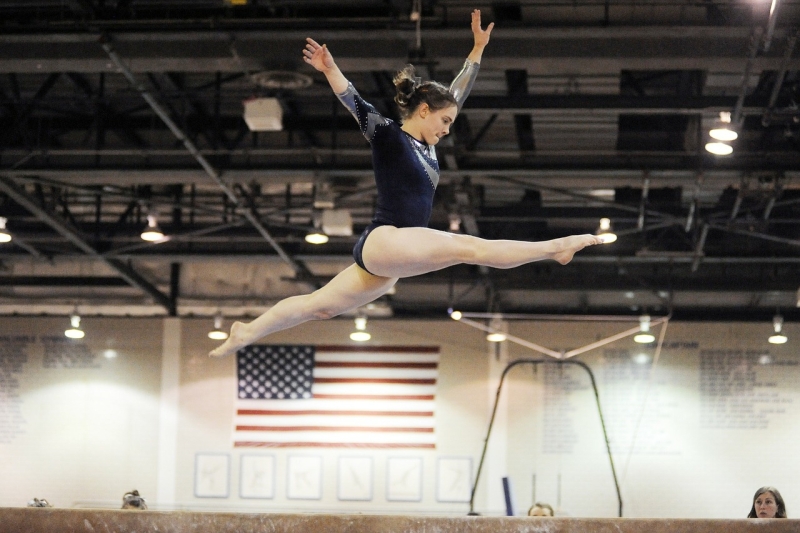
Putting It All Together
Let's take a quick moment to recap what we've covered, because it's been a lot of information. They key to peak gymnastics performance is focusing on the correct set of skills at the correct time.
- It's always important to work to evolve our self-concept, because it has the ability to limit an otherwise peak performance.
- We focus on our attention and thoughts during training and practice, because we're seeking to make small and continual improvements to gymnastics. Feedback, goal-setting, and visualization are key to improving via our attention.
- We focus on our procedure (our subconscious) during competition, because this is not the place for improvement. We are looking to trust in our body's procedural knowledge and skill, and "letting it rip" during competition. Breath control, presence, and emotional regulation skills can all help us during competition.
The 10.0 Mindset System can be viewed as a sort of chain of elements. The five elements of our chain include:
- Training (Attention)
- Competition (Procedure)
- Living (Self-Concept)
- Goal Setting
- Mental Skills (Motivation, commitment, confidence, etc.)
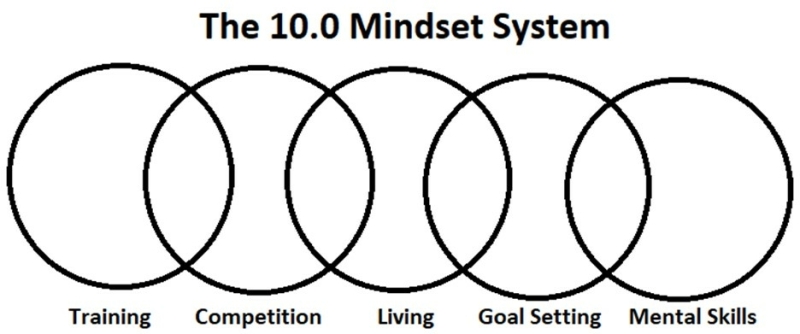
Remember that a chain, when pressure is applied, will break at its weakest link. That's why it's important to strive for a balance of these five elements, in order to have the strongest chain possible. The stronger our chain is, the more likely we are to have a peak gymnastics performance.
About coach Nicholas Adair
Coach Nicholas Adair is full-time gymnastics coach, mental skills coach and mindfulness educator, working in northern New Jersey. Aside from his full-time coaching duties, he also maintains an active website and podcast, "The 10.0 Mindset with Coach Nick," and additional resources can be found at his website.
